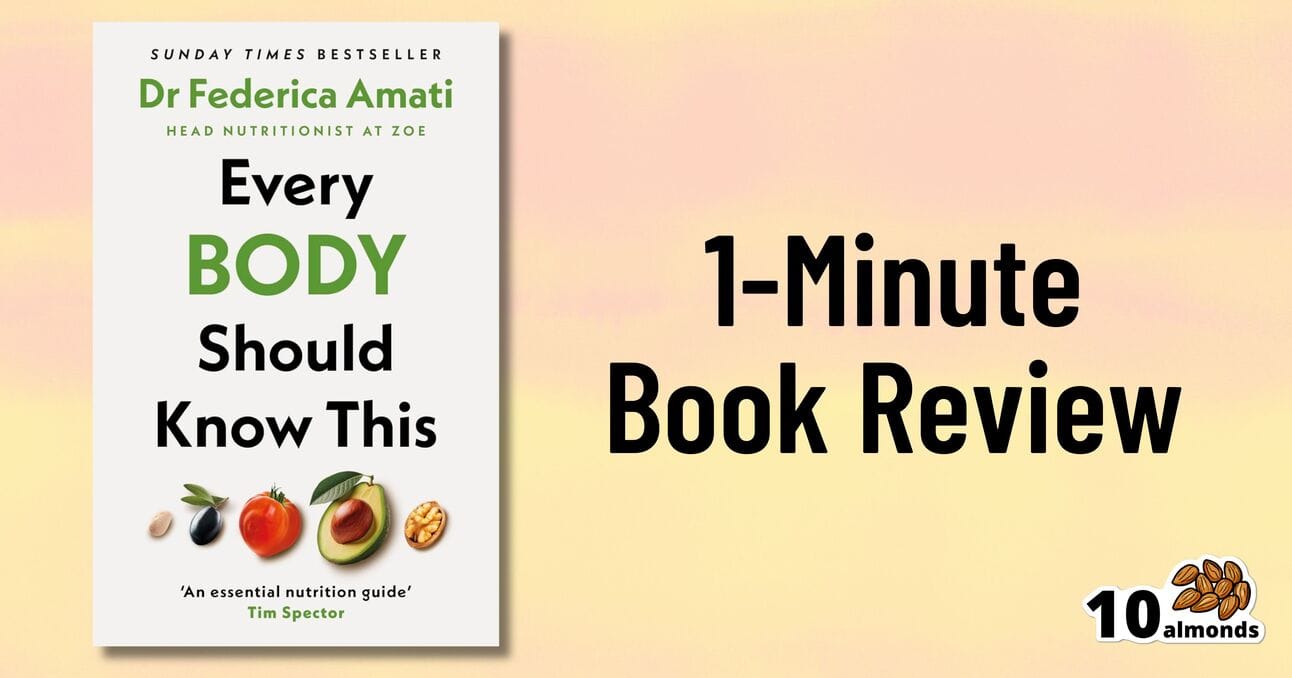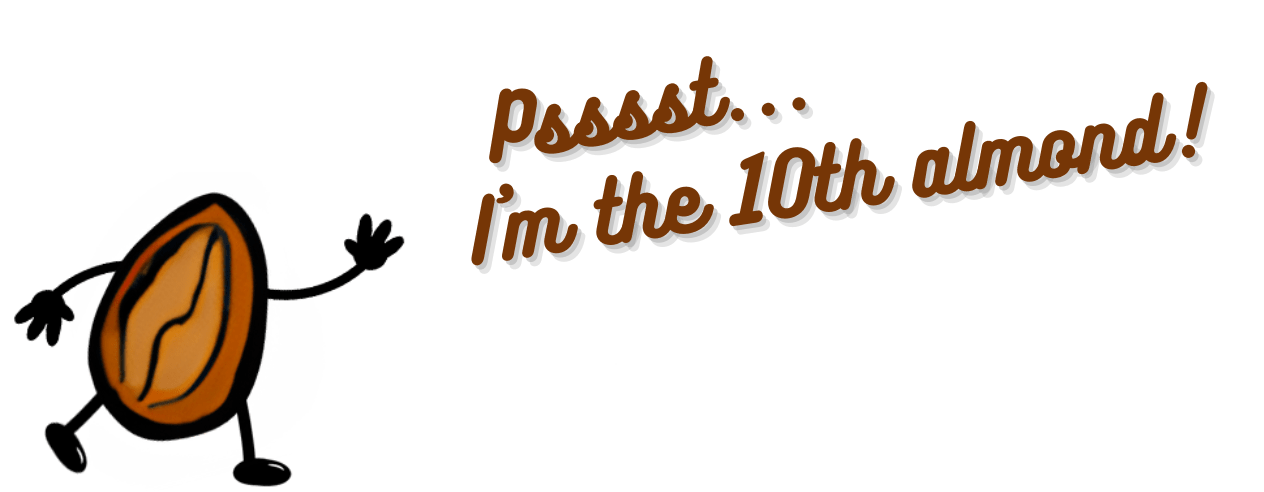❝Let go of the thoughts that don’t make you strong❞
In A Rush?
Today’s 30-Second Summary
If you don’t have time to read the whole email today, here are some key takeaways:
How’s the daylight doing, where you are? Darkness closing in?
Today’s main feature is about staving of Seasonal Affective Disorder, in more ways beyond the obvious (the obvious being: maximizing sunlight where possible, and using artificial sunlight lamps).
We know that 10almonds readers don’t just want to look younger, but ideally to be younger, biologically speaking.
Today’s sponsor, Qualia Senolytic, are offering a potent supplement product to target and eliminate senescent cells, meaning the ones that get copied forward are the younger cells.
Today’s featured book is a primer in eating for a long healthy life, from the head nutritionist at ZOE!
Read on to learn more about these things, or click here to visit our archive
A Word To The Wise
Psychopaths, Psychologists, Sociopaths, & Sociologists
How much do words like “psychopath” and “sociopath” really mean, according to psychologists and sociologists?
Watch and Learn
How To Heal Psoriasis Naturally
Nutritionist Julia Davies explains the gut-skin connection (& how to use it to your advantage) in this video:
Prefer text? The above video will take you to a 10almonds page with a text-overview, as well as the video!
Psychology Sunday
Seasonal Affective Disorder (Beyond Sunlight!)
For those of us in the Northern Hemisphere, the time of increasing darkness is upon us again. Depending on our latitude, the sun barely rises before it skitters off again. And depending on other factors of our geography, we might not get much sun during that time (writer’s example: the ancient bog from which I write has been surrounded by fog for two weeks now).
So, what to do about it?
Firstly, we can make the most of whatever sun we do get (especially in the morning, if possible), and we can of course make some use of artificial sunlight. To save doubling up, we’ll link to what we previously wrote about optimizing both of those things:
More ways to get serotonin
Sunlight, of course, triggers our bodies to make serotonin, and hence we often make less of it during winter. But, there are other ways to get serotonin too, and one of the best ways is spending time in nature. Yes, even if the weather is gloomy, provided there are still visible green things and you are seeing them, it will promote serotonin production.
Of course, it may not be the season for picnics, but a morning walk through a local park or other green space is ideal.
On which note, gardening remains a good activity. Not a lot of people do so much gardening after a certain point in the year, but in one way, it’s more important than ever to get some soil under your fingernails:
There are bacteria in soil (specifically: Mycobacterium vaccae) that work similarly to antidepressants.
When something is described as having an effect similar to antidepressants, it’s usually hyperbole. In this case, it’s medicine, and literally works directly on the serotonergic system (as do many, but not all, antidepressants).
See also: Antidepressants: Personalization Is Key!
While many antidepressants are selective serotonin uptake inhibitors (i.e., they slow the rate at which your brain loses serotonin), Mycobacterium vaccae increases the rate at which you produce serotonin. So, you feel happier, more relaxed, while also feeling more energized.
^this one’s a mouse study, but we’re including it because it covers exactly how it works in the brain, which is something that the ethics board wouldn’t let them do on humans, due to the need for slicing the brains up for examination.
As to how to benefit: touching soil will get you “infected” by the bacteria, yes, even if you wash your hands later. Growing food in the soil and eating the food (including if you wash and cook it) is even better.
Boost the other “happiness chemicals”
Serotonin is just one “happiness hormone”, other feel-good neurotransmitters that are just as important include dopamine and oxytocin.
Dopamine is most associated with being the “reward chemical”, so it pays to do things that you find rewarding. If you’re stuck for ideas, engaging in small acts of kindness is a sure-fire way to get dopamine flowing and lift your own mood as well as theirs.
See also: 10 Ways To Naturally Boost Dopamine
Oxytocin, meanwhile is the “cuddle chemical”, and can be triggered even if you have nobody to cuddle*. If you do, by the way, make it at least 20–30 seconds, as that’s generally how long it takes to get oxytocin flowing.
*Vividly imagining it has much the same effect, since the brain can’t tell the difference. Alternatively, looking at pictures/videos (your choice) of small cute animals tends to work for most people also.
For more on these things, check out: Neurotransmitter Cheatsheet
Take care!
Our Sponsors Make This Publication Possible
Rejuvenate Your Youth: The Power of Eliminating “Zombie Cells” Unveiled
Qualia Senolytic isn't just another supplement; it's a breakthrough in the fight against aging. Targeting senescent cells, or "zombie cells" that sap your vitality and speed up aging, this formula offers a new lease on life, promoting energy, agility, and recovery.*
Crafted from 100% vegan, non-GMO, gluten-free ingredients, including potent compounds like fisetin and piperlongumine, Qualia Senolytic is designed to cleanse your body of senescent cells, unlocking a more vibrant, energetic you.*
Endorsed by leading health experts and embraced by professionals for its transformative effects, Qualia Senolytic is more than a supplement—it's your ally in turning back the clock. Experience the difference and revitalize your youth.
NEW CUSTOMER SALE: Order now and save 50% plus get 15% more off with code CELLS.
These statements have not been evaluated by the Food and Drug Administration. This product is not intended to diagnose, treat, cure, or prevent any disease.
Please do visit our sponsors—they help keep 10almonds free
This Or That?
Vote on Which is Healthier
Yesterday we asked you to choose between edam and gouda—it was close, but we picked the edam (click here to read about why), as did 34% of you!
Now for today’s choice:
Click on whichever you think is better for you!
One-Minute Book Review
Every Body Should Know This: The Science of Eating for a Lifetime of Health – by Dr. Federica Amati
This book is very much a primer on how to eat healthily. The science is high-quality (the author is the head nutritionist at ZOE) and well-explained, and the advice is reasonable.
Limitations: this book is not very deep, which we might expect from a book with this title. So, if you’ve been a long-time 10almonds reader, you might not learn a lot here, and this book might make a better gift for someone else.
In particular, the book may be well-suited for someone who is thinking of having children soon, as there is an unusual amount of focus on fertility and young motherhood—perhaps because the author herself has young children and so was preoccupied with this when writing. For those of us who are definitely not having any more children, the focus on young motherhood is a little superfluous.
The writing style is very readable pop-science, and nobody who is able to read English is likely to struggle with this one. It’s also quite conversational in parts, as the author discusses her own experiences with implementing the science at hand.
Bottom line: if you want a good, solid, primer of how to eat well for a lifetime of health, especially if you are (or are thinking of becoming) a young mother, then this is a very good book. Otherwise, it’s probably a better to give it as a gift.
Penny For Your Thoughts?
What did you think of today's newsletter?
Wishing you a peaceful Sunday,
The 10almonds Team








